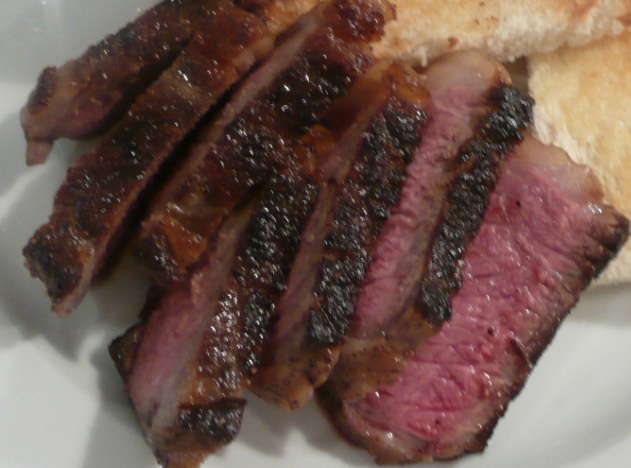Oven-Finished Meat
 Tuesday, May 22, 2012 at 4:00AM
Tuesday, May 22, 2012 at 4:00AM 
A very generous gift certificate sent me over to one of nyc’s finest meat purveyors. After helping me to select a prime cut of dry-aged porterhouse, the butcher asked, “you know what to do with this?” Well! It was nearly condescending enough to send me out the door, but I swallowed my chego (that’s chef-ego, a powerful brand of pride) and did what I always do, even when I think I know best: I asked the expert how he would prepare the steak. Passionate experts are always happy to offer knowledge about their goods; you’ll almost always learn something new, and if you don’t, you can quietly bask in the knowledge that you would have done it just like the pro.
For this 3-inch-thick, bone-in, slab of beef, the butcher recommended a combination of direct and indirect heat, starting on the stovetop, about 6 minutes per side, and finishing in a 400 degree oven until medium rare, about 18 minutes. Finishing in the oven is a simple technique employed by all chefs and is the best way to cook thicker cuts of meat so that they are crusty golden on the outside and delicately moist inside. This method is especially effective with lean proteins, like chicken; even the dreaded boneless, skinless breast will emerge succulent.
Start by preheating the oven (375 degrees will do for most meat). Next, preheat an ovenproof skillet over medium-high heat; add your fat of choice, like olive oil or goose lard (you can never go wrong with a good goose lard), and sear the meat until deep golden on both sides to impart that intoxicating caramelized flavor. Then just pop the whole pan into the oven and let the meat finish cooking in that nice gentle ambient heat (use a meat thermometer to check doneness- chicken 165 degrees, pork 160 degrees and medium-rare beef 135 degrees).
Special Fork is a recipe website for your smartphone and PC that solves the daily dinnertime dilemma: what to cook now! Our bloggers blog Monday through Friday to give you cooking inspiration. Check out our recipe database for quick ideas that take no more than 30 minutes of prep time. Join the conversation on Facebook and follow us on Twitter.
Related posts:
Reader Comments